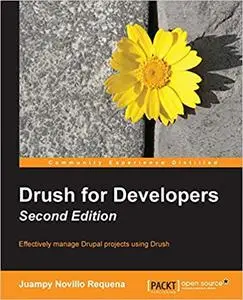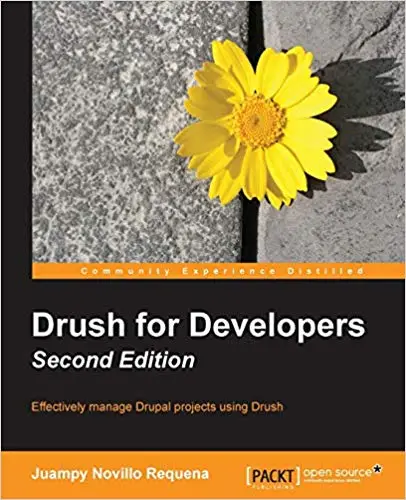Juampy Novillo Requena, "Drush for Developers, 2nd Edition Ed 2"
English | ISBN: 1784393789 | 2015 | 164 pages | PDF | 2 MB
English | ISBN: 1784393789 | 2015 | 164 pages | PDF | 2 MB
Effectively manage Drupal projects using Drush
About This Book
Install Drush on different systems, and download and install a full Drupal site in seconds
Automate, optimize and monitor periodic and one-off tasks
Manage multiple environments and define commands to simplify and automate processes within a team
Who This Book Is For
This book is a best fit for backend developers with a basic knowledge of Drupal's APIs and some experience using the command line. Perhaps you already worked on one or two Drupal projects, but have never dived deep into Drush's toolset. In any case, this book will give you a lot of advice by covering real-world challenges in Drupal projects that can be solved using Drush.
What You Will Learn
Update the database of a Drupal project to reflect changes in the codebase
Optimize, execute, and monitor periodic and one-off tasks
Browse through Drush and Drupal's hook implementations and functions
Implement a roll-back mechanism on your commands to handle errors
Define a group of site aliases to manage all the environments of your Drupal project
Create shell aliases and adjust the default behavior of frequent commands
Set up a development workflow for a team
In Detail
Drush for Developers, Second Edition, takes common challenges in Drupal projects and solves them using Drush. This book starts with the different installation approaches for Drush and its command structure. It then moves on to perhaps the trickiest challenge in Drupal projects: keeping code and configuration together during a project's lifetime. Next, we will deep dive into the tasks needed to keep a website under control and learn how to run, automate, and monitor them effectively.
Error validating and debugging our Drush commands is a must and this book has a whole chapter on that topic. The magic of managing remote Drupal projects through Drush site aliases is explained in the following chapters through a practical example. Finally, the book wraps up by putting in practice all the concepts covered in previous chapters in order to implement a development workflow for a team.



